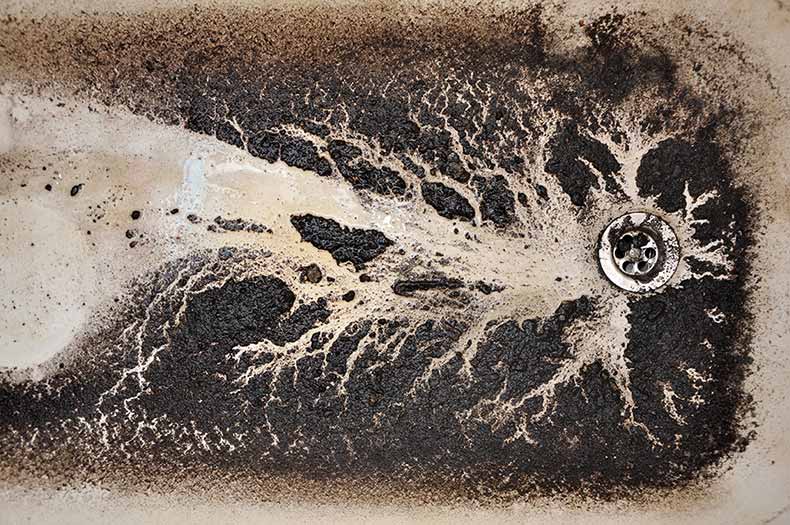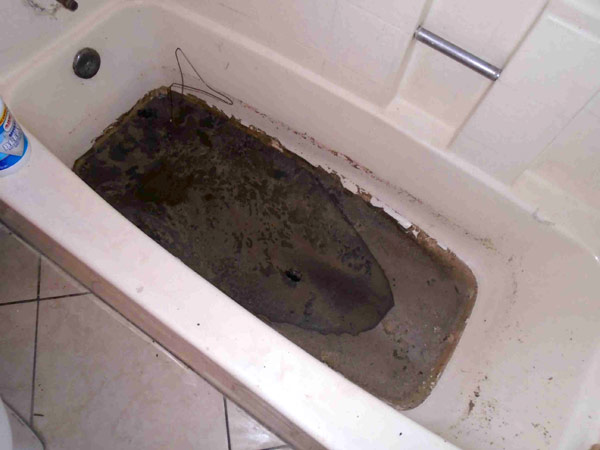Leading Reasons Behind Discharge Backflow in the Bathtub
Leading Reasons Behind Discharge Backflow in the Bathtub
Blog Article
We have uncovered this post about What To Do If Sewage Starts Backing Up Into the Shower listed below on the net and concluded it made good sense to relate it with you on my blog.

Sewage back-up in the tub can be a distressing and unhygienic problem for any type of property owner. Not just is it troublesome, yet it likewise postures severe health dangers and shows underlying problems with the plumbing system. Recognizing why sewage is showing up through the tub is crucial for taking proper action to attend to the trouble efficiently.
Intro to the Issue
Typical Factors for Sewer Back-up
Blockages in the Sewer Line
One of one of the most typical sources of sewage back-up is a clog in the sewer line. This can happen as a result of the accumulation of debris, oil, or international objects in the pipes, stopping correct flow and triggering sewer to back up into your tub.
Tree Origin Breach
Tree origins looking for dampness and nutrients can infiltrate sewer lines with little fractures or joints. In time, these roots can grow and broaden, creating substantial damages to the pipelines and resulting in sewage backup problems.
Comprehending the Issue
When sewer starts backing up into the bathtub, it's a clear indication of a problem with the drainage system. The wastewater that ought to be streaming away from your home is instead discovering its way back into your living space, which can cause significant damages and carcinogen.
Possible Reasons
A number of elements can contribute to sewage backup in the bathtub. From blockages in the sewer line to concerns with the plumbing framework, recognizing the origin is essential for locating a remedy.
Aging Framework
Older homes might have dated plumbing systems that are more susceptible to deterioration, fractures, and wear and tear. As pipes age, they come to be a lot more susceptible to leaks and blockages, increasing the chance of sewer backup cases.
Heavy Rainfall or Flooding
Throughout periods of heavy rainfall or flooding, the sewer system might end up being overwhelmed with excess water, creating backups and overflows. This can result in sewer supporting into bathtubs and various other fixtures inside the home.
Indicators of Sewage Back-up
Foul Odors
Unpleasant smells emanating from drains pipes or components, particularly in the washroom, might show sewage back-up concerns. These smells are usually strong and relentless, signifying a problem that requires prompt focus.
Slow Draining Fixtures
Bath tubs, sinks, and toilets that drain slowly or not in all could be experiencing sewage back-up. If several fixtures are influenced simultaneously, it's likely that the concern stems from a common factor, such as the major sewage system line.
Gurgling Sounds
Odd gurgling or bubbling sounds originating from drains when water is running elsewhere in the house are a measure of air entraped in the plumbing system. This air buildup can result from sewage backup and must be checked out immediately.
Wellness Dangers Connected With Sewage Backup
Contamination of Supply Of Water
Sewage back-up can pollute the water system in your home, posing a major health threat to you and your family. Direct exposure to contaminated water can bring about stomach issues, skin infections, and other illnesses.
Mold and mildew Development
Dampness from sewer back-up can develop excellent problems for mold and mildew growth in your home. Mold spores can exacerbate respiratory troubles and trigger allergic reactions in sensitive individuals, making punctual clean-up crucial.
Spread of Illness
Sewage includes hazardous bacteria, infections, and bloodsuckers that can cause a variety of illness, including hepatitis, cholera, and gastroenteritis. Coming into contact with sewer or infected surfaces puts you in danger of infection.
Cleaning Up After Sewer Backup
Sanitation Procedures
Completely decontaminate and sterilize influenced locations after sewage back-up to get rid of dangerous germs and avoid mold and mildew growth. Usage ideal cleaning products and safety gear to make certain safe and reliable clean-up.
Reconstruction of Influenced Areas
Fix any damages to flooring, wall surfaces, or components caused by sewer back-up. Relying on the degree of the damages, you might require to change carpets, drywall, or various other products to restore your home to its pre-loss problem.
Immediate Actions to Take
Shutting Off Water
In the event of sewer backup, it's important to shut off the water system to avoid additional contamination and damage. Locate the main water shutoff valve in your home and closed it off till the concern can be settled.
Speaking To a Specialist Plumber
Managing sewer backup is not a DIY work. Call an accredited plumber with experience in managing sewage-related problems to evaluate the situation and execute needed repair work or cleanings.
Avoiding Contact with Polluted Water
Up until the sewer backup is solved, stay clear of contact with infected water to prevent the spread of germs and pathogens. Put on safety gear if you need to be in the afflicted location and wash your hands extensively later.
Preventive Measures
Routine Upkeep of Drain Lines
Arrange normal evaluations and upkeep of your sewage system lines to identify and deal with potential problems prior to they rise right into major problems. This can include cleaning debris, checking for tree origin breach, and fixing any damaged pipes.
Mounting Bayou Valves
Consider setting up backwater valves in your plumbing system to avoid sewer from flowing back into your home during periods of heavy rainfall or flooding. These valves immediately close when water starts backing up, securing your home from contamination.
Appropriate Disposal of Family Waste
Stay clear of purging anything apart from bathroom tissue and human waste down the commode to stop obstructions and clogs in the drain line. Dispose of oil, oil, and various other home chemicals effectively to minimize the risk of plumbing issues.
Why Is Water Backing Up in My Bathtub When I Flush My Toilet?
What to do about a sewer line clog
First, don’t bother with plunging. No amount of plunging will dislodge the clog in a sewer line. The clog is too far away. Plungers are for clogs in the toilet itself, not the sewer line. Plus, the most likely causes of a sewer clog are:
Tree roots Flushed toys or feminine products Grease buildup Those items don’t move easily. And in the case of tree roots, the roots need to be cut out of the pipe and the pipe will need to be repaired.
You’ll need a closet auger. A closet auger is a type of plumber’s snake with a protective cover to keep from scratching the delicate porcelain toilet. If the clog is further down, you may need to remove the toilet or use one of your cleanouts to get to the clog.
We also recommend doing a video inspection of the drain to ensure that the cause of the clog has been completely removed. Otherwise, you could have the same problem again in a few days or weeks.
https://mspplumbingheatingair.com/blog/why-is-water-backing-up-in-my-bathtub-when-i-flush-my-toilet

Do you really like reading about Why is Sewage Backing Up Into My Bathtub?? Put a remark down below. We will be happy to listen to your ideas about this write-up. In hopes that you come back again soon. If you appreciated our blog post kindly make sure you remember to pass it around. I am grateful for your time. Come back soon.
Start Now
Report this page